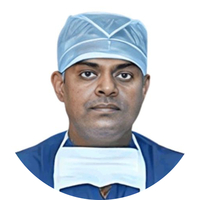Summary
An extensor tendon repair is performed to reattach a damaged or cut extensor tendon present in the hand. This tendon helps you move your finger and to hold things. Damage to the extensor tendon leads to an inability to extend fingers, swelling and pain in the hand, and change in the appearance of the hand. Before the repair, your doctor will take your complete medical history and perform a physical examination. They may also order an X-ray. Depending on the need, the surgery may take place in the emergency department or operating room. It will be performed under local anaesthesia and takes about half an hour.
After the surgery, you will need a splint for a few weeks to prevent any movement. You may need medicine and an ice pack to help with the pain. The stitches will be removed in the follow-up visit. If you experience any symptoms like fever and pain, inform your doctor immediately.










































